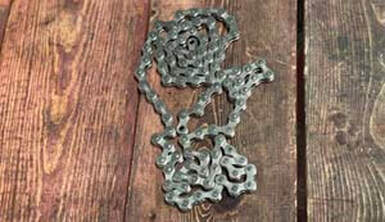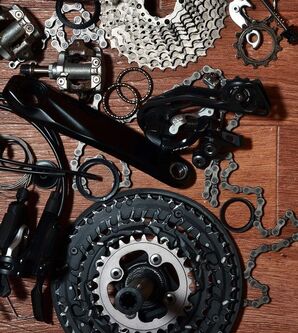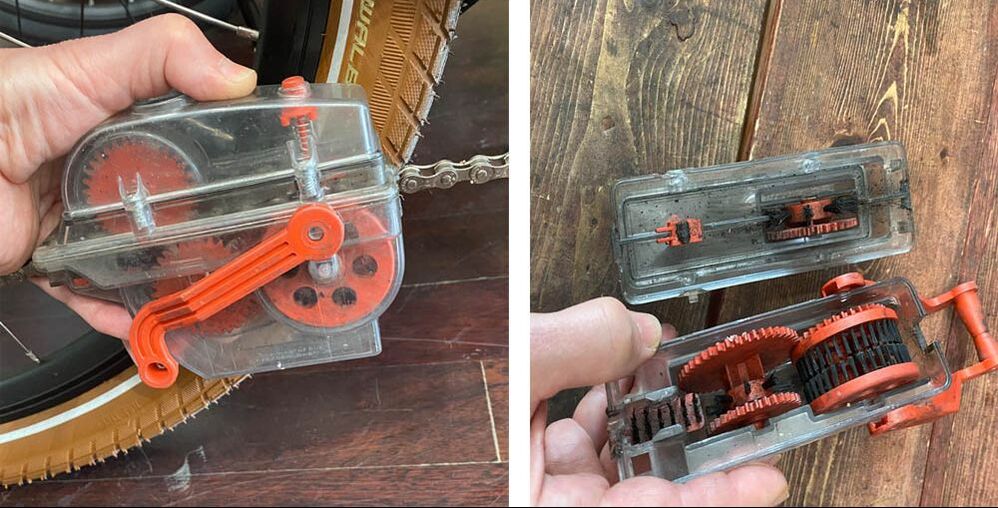 The single most important thing a cyclist can do to keep a bike running at its best is to clean and lubricate the bike chain on a regular basis. This is within the skill level of even the most elementary rider and is a low-cost procedure—it only requires at a minimum some bike lubricant and a rag and can be performed indoors in an apartment or garage or outdoors in any environment your bike is in. There are different levels of cleaning from basic, to moderate, to deep cleaning and which procedure you use will depend on the condition of your drive train and how dedicated you are to bike maintenance. Benefits of Cleaning Your Bike Chain The drive chain of a bike consists of the front crank, rear cassette, freewheel or fixed cog, front and rear derailleurs and the chain itself. A dirty chain will form a grinding paste that will wear down the drive train. Keeping a chain properly lubed will also prevent rust from developing and rust, like dirt, adversely impacts performance and accelerates wear. The movement of the chain over the crank and cassette will cause the teeth to wear down under normal circumstances but dirt, rust, or a dry chain will speed up of the wear, increase friction, produce poor shifting, result in rough pedaling, display excessive noise, potentially transfer dirt onto your leg or pants, and result in wasted energy. Regular chain cleaning and lubing will minimize all of these negative effects and make your bike more fun to ride. How Often to Clean your Bike Chain How often you clean your chain depends on the type of lube you use, riding conditions such as wet or extremely dry environments, and how much you ride. An average bike commuter can get away with monthly maintenance, but if you are caught the rain or snow or ride in extremely dusty conditions, you should immediately clean and lube the chain after such a ride. Regular basic chain cleanings will reduce the need to do a more involved deep cleaning. Basic Chain Cleaning Before getting started determine if your chain is rusted, stretched, or worn in which case all the cleaning in the world will not help, it should just be replaced. If your chain is still in good shape but just needs some love, gather a bottle of bike specific lube and a few clean, lint-free rags. If you are doing this procedure indoors you might spread a tarp or drop cloth under the bike to collect dirt and spray.
Moderate Drive Train Cleaning If you have not been doing regular chain cleaning and you find your chain is too dirty for a basic cleaning with a rag and some lube, then the next step is to do a more thorough cleaning and you can do this in most cases while the chain is still on the bike. While you have all the equipment out and are prepared to get down and dirty, it makes sense to also clean other drive train components such as the cassette or freewheel or fixed cog, derailleur pulleys, and cranks. You will need degreaser in a bucket or spray bottle, a stiff brush for the chain and a thin brush for getting in between the cogs, a garden hose or spray bottle to rinse, and an open, outdoor space that you do not mind getting dirty. Optional items are gloves, a chain cleaning tool, and an air compressor or hair dryer.
 Deep Drive Train Cleaning If you are obsessed with having a clean bike or want optimal performance you might want to do a deep drive train cleaning. This involves removing the rear wheel, the chain, cassette, freewheel or fixed cog, and cranks and use degreaser and brushes to get all dirt off. Optional equipment to have might be an ultrasonic cleaner. Advantages of a deep cleaning are since all cleaning is done off the bike, there is less chance of getting water into the bearings, if you have limited outdoor cleaning space it allows you to do your cleaning in a sink, and you can really get into the nooks and crannies to remove dirt from inside the rollers. A disadvantage is that you need the expertise and special tools to remove the components and the knowledge for how to adjust and torque them when reassembling. Another downside is that when removing a chain, there is a risk that the master link will become bent during disassembly, in which case a new link will have to be used. Other Bike Chain Cleaning Tips
Comments are closed.
|
Earth Rider Blog about CycingAuthorSharon Kaminecki and others comment on adventures in bicycling and other stories Categories
All
Archives
August 2023
|




